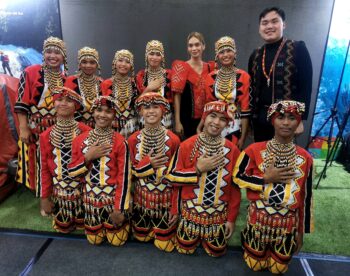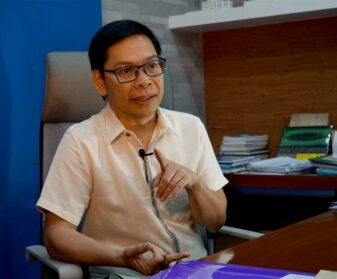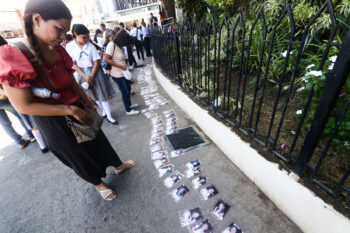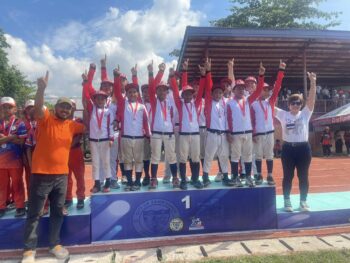Last of a six-part series
*This six part series is based on an article I wrote with Atty. Janice Lee entitled “The Draft Bangsamoro Basic Law: Overcoming Constitutional Challenges” which Ateneo de Davao University just published in a Compendium on the Draft Bangsamoro Basic Law.
CAGAYAN DE ORO CITY (MindaNews/15 March) — Under the draft Bangsamoro Basic Law (BBL), the establishment of the Bangsamoro and the determination of the Bangsamoro territory shall take effect upon ratification of BBL by majority of the votes cast in the following provinces, cities, and geographical areas in a plebiscite conducted for the purpose: (a) The present geographical area of the Autonomous Region in Muslim Mindanao (ARMM); (b) The Municipalities of Baloi, Munai, Nunungan, Pantar, Tagoloan and Tangkal in the province of Lanao del Norte; (c) Thirty nine (39) named Barangays in the Municipalities of Kabacan, Carmen, Aleosan, Pigkawayan, Pikit, and Midsayap in North Cotabato that voted for inclusion in the ARMM (Autonomous Region in Muslim Mindanao) during the 2001 plebiscite under Republic Act No. 9054; (d) The Cities of Cotabato and Isabela; and (e) Those qualified for inclusion in the plebiscite, by way of resolution or petition.
Under Section 3, Article XV of the draft BBL, to be included in the Bangsamoro, the treatment of votes for each item enumerated above is different. For letter (a), there must be a majority vote of the registered voters in each province and city; for (b), there must be a majority of the registered voters in the municipality; for (c), there must be a majority of registered voters in the barangay; for (d) there must be a majority of the registered voters in the city; for (e), a majority of the registered voters in the local government unit concerned.
Three points may be stressed here.
First, the requirement under the BBL is that there must be a majority vote of all registered voters in the local government unit for that unit to be considered as part of the Bangsamoro. Under Section 18, Article X of the Constitution, “[t]he creation of the autonomous region shall be effective when approved by majority of the votes cast by the constituent units in a plebiscite called for the purpose”. The same requirement is found under Republic Act Nos. 6734 (Creating the ARMM) and 9054 (Expanding the ARMM). Thus, the draft BBL appears to require stricter numbers than those under the Constitution for an LGU (Local Government Unit) to become part of the Bangsamoro.
Second, the scheme proposed under the draft BBL is unclear as to whether the six (6) municipalities of Lanao del Norte, and the thirty-nine (39) barangays in North Cotabato, may independently vote to become part of the Bangsamoro, even if the provinces or cities to which they belong do not become part of Bangsamoro.
The provisions of R.A. 6734 and 9054 may be considered in this regard. Under these laws, the plebiscite to create the autonomous regions was only to be conducted in the affected provinces and cities, and not in their component municipalities and barangays. Should Congress enact the BBL, it may be inferred that these provisions were made with the knowledge of how the earlier laws on ARMM conducted the plebiscite. Thus, the intention to include local government units such as municipalities and barangays, even without their provinces or cities, may also be inferred.
The Supreme Court has also held that any determination by Congress of what areas in Mindanao should compromise the autonomous region, taking into account shared historical and cultural heritage, economic and social structures, and other relevant characteristics, would necessarily carry with it the exclusion of other areas. Such determination by Congress of which areas should be covered by the organic act for the autonomous region constitutes a recognized legislative prerogative, whose wisdom, we believe, may not be inquired into by the Court.
As a practical matter, however, such a scenario may prove to be logistically difficult to implement. Should these municipalities and barangays be allowed to become “islands” belonging to the Bangsamoro but geographically still situated in their original provinces and cities, numerous questions will arise. These include issues as to what province or city then the municipality or barangay will belong; how they should vote during elections for local and national positions; what laws will govern in their admittedly limited territory; who will be responsible for the provision of basic services therein; whether there will be any changes in legislative districts; whether territorial boundaries will be altered; and the like. It is submitted that should Congress allow such a scenario, it must also provide for the special rules that will apply to these units.
Third, it is likewise unclear whether, in the event that the municipalities and barangays are allowed to be part of the Bangsamoro without their provinces or cities, these provinces or cities should likewise be allowed to vote in the same plebiscite which may divorce the said municipalities and barangays from them.
Section 10, Article X of the Constitution provides that: “No province, city, municipality, or barangay may be created, divided, merged, abolished, or its boundary substantially altered, except in accordance with the criteria established in the local government code and subject to approval by a majority of the votes cast in a plebiscite in the political units directly affected.”
While the draft BBL provides that the barangays and municipalities may vote in the plebiscite, it does not provide that Lanao del Norte and North Cotabato, of which they are part, must also vote.
In a case decided last year, the Supreme Court ruled that the province to which a local government unit belongs, and which the latter seeks to leave, is a “directly affected” political unit, which must participate in the plebiscite. The Court explained: “In cutting the umbilical cord between Cabanatuan City and the province of Nueva Ecija, the city will be separated from the territorial jurisdiction of the province, as earlier explained. The provincial government will no longer be responsible for delivering basic services for the city residents’ benefit. Ordinances and resolutions passed by the provincial council will no longer cover the city. Projects queued by the provincial government to be executed in the city will also be suspended if not scrapped to prevent the LGU from performing functions outside the bounds of its territorial jurisdiction, and from expending its limited resources for ventures that do not cater to its constituents” The Court then went on to categorically say: “In view of these changes in the economic and political rights of the province of Nueva Ecija and its residents, the entire province certainly stands to be directly affected by the conversion of Cabanatuan City into an HUC (Highly Urbanized City). Following the doctrines in Tan and Padilla, all the qualified registered voters of Nueva Ecija should then be allowed to participate in the plebiscite called for that purpose.“
According to the Supreme Court: “It is unfathomable how the province can be deprived of the opportunity to exercise the right of suffrage in a matter that is potentially deleterious to its economic viability and could diminish the rights of its constituents. To limit the plebiscite to only the voters of the areas to be partitioned and seceded from the province is as absurd and illogical as allowing only the secessionists to vote for the secession that they demanded against the wishes of the majority and to nullify the basic principle of majority rule.”
In sum, due to the significant impact in the political and economic rights of the local government unit involved, it was held that the political units “directly affected” included the province to which the component LGU belongs, which may, in this context, include the barangays and municipalities participating in the plebiscite.
This decision clearly applies to the BBL’s provisions on who will participate in the BBL. Our main recommendation is for these provisions to be amended to reflect the constitutional jurisprudence discussed in this article. In any case, if included, they must clearly be made separable from the rest of the BBL.
Conclusion of Series
The draft Bangsamoro Basic Law presents navigable challenges to the legislative in order to ensure that it will pass any Constitutional tests. As stated, the revision of certain provisions, particularly those on territory, natural resources, judicial review, human rights, and indigenous peoples’ rights may be necessary to avoid any misinterpretation of its provisions. A definition of key terms introduced under the BBL will also be helpful, including of “asymmetric relationship”, “exclusive powers” and “Bangsamoro”.
It is possible to have a BBL that is consistent with both the Constitution and the Comprehensive Agreement on the Bangsamoro, but hard work, both legal rigor and imagination, and sincerity on all sides are essential to get to the destination we want.
(MindaViews is the opinion section of MindaNews. Dean Tony La Viña is a human rights and environmental lawyer from Cagayan de Oro City. He was a member of the Government of the Philippines Peace Panel that negotiated with the MILF from January-June 2010. He is currently the Dean of the Ateneo School of Government. Dean Tony can be reached at Tonylavs@gmail.com. Follow him on Facebook: tlavina@yahoo.com and on Twitter: tonylavs.)






